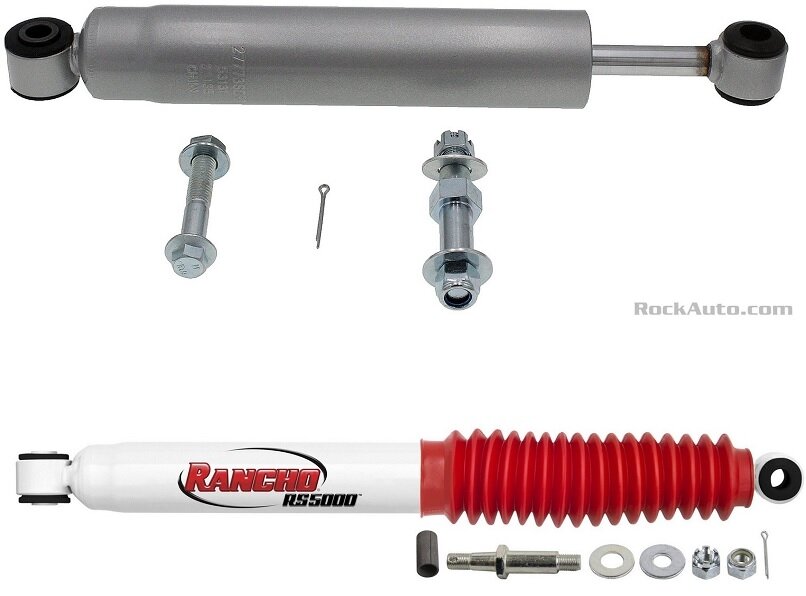The first suspect is the steering damper. The photo below shows the original one on top, and an aftermarket replacement on the bottom. Some models didn't come with a damper. For those, you can use the aftermarket part. For those with a factory-installed damper, you can add the aftermarket one for a second damper.
This part looks like a standard shock absorber, except it moves in both directions with equal resistance. Shock absorbers pull apart really hard, and push together very easily, so they are not acceptable as a damper replacement. You'll find this attached to the front crossmember on one end, and to the steering linkage on the other end.
If a new damper doesn't solve the wobble, there's two things to consider. The first is adding that second damper. The other issue has to do with the alignment, and that always starts with an inspection of the steering and suspension systems. When parts are worn or sloppy, they can allow the wobble to occur, but they don't cause it. The wobble has to be caused by something that is rotating, otherwise it would occur when the vehicle is standing still. This gets much worse when oversize tires are installed, or when using aftermarket wheels with a deeper offset. Both play a role in the road forces that add energy to the wobble.
Once all the parts are known to be okay, the alignment issue has to do with the unusually high "caster" called for on most Jeep models. Caster is one of the three main alignment angles. It's easiest to visualize it by observing the fork of a bicycle and how it angles rearward at the top. That is what allows you to ride no-handed when weight is placed on the tires. That weight makes the tire want to squirt out straight to the front.
The very high caster setting greatly reduces steering wander and makes driving less tiring, but another function is it is what makes the wheels want to return to center after letting go of the steering wheel after turning a corner. With the high settings needed to achieve all the other benefits, it makes the wheels want to return too aggressively, so they over-shoot and go the other way. The friction between the tires and the road surface adds energy, then the wheels come back to center too fast and over-shoot again. That's the wobble you're describing. If the damper doesn't solve this, and all the other parts are okay, pursue the alignment, and ask to have caster on the two front wheels set near the lower limit in the range of allowable specs. That will also make turning at low speeds, as when driving through a parking lot, a little easier.
Let me now what you find.
Image (Click to make bigger)
Monday, July 3rd, 2023 AT 3:51 PM
